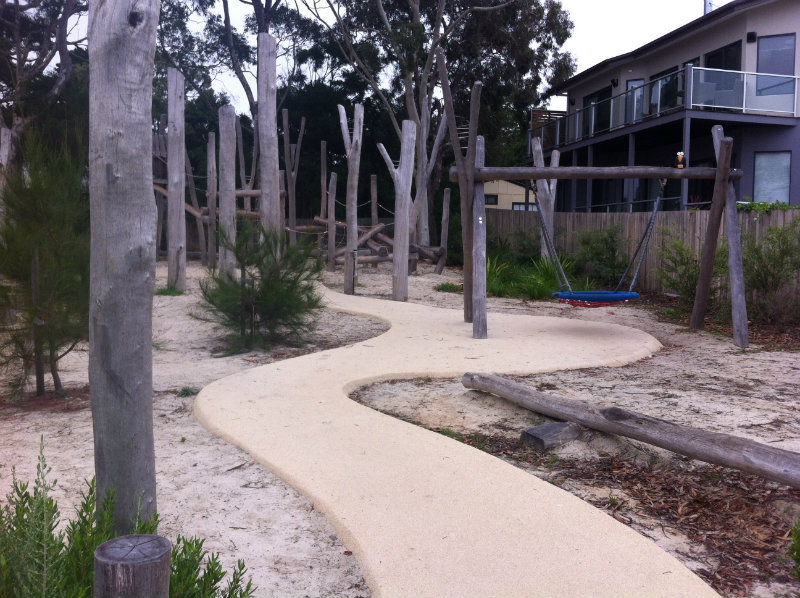Do you have a favourite playground in your neighbourhood? What do you love about it? We saw a beautiful natural playground in Metung a couple of months ago. It was a great example of how natural materials can be used to create a lovely space for children to play.
We thought it was special to see a playground built out of natural materials, because so many of the playgrounds that we see these days are made out of plastics and other unnatural materials.
Children experience a great sense of freedom from playing in an outdoor setting and they can use the space to explore their whole bodies with less restrictions on noise and activity.
The quality of the play environment is important. Children playing in lower quality outdoor environments tend towards functional and repetitive play, whereas children in high quality environments tend to engage in more constructive play.
So what makes a good playground? Traditional playgrounds with fixed equipment such as swings, monkey bars and slides do not offer opportunities for children to play creatively.
Playing in natural environments has been shown to have numerous health benefits for children, such as improved cognitive function and creativity, improved interaction with adults, reduced rates of aggression and attention deficit hyperactivity disorder. (Taylor et al, 2002)
Australian Institute of Landscape Architects – Australia’s Best Playground
You can have your say in the AILA – Australia’s Best Playground competition. The aim of this competition is to recognise and celebrate well designed public playspaces and the landscape architects who are committed to designing and creating a better Australia. 45 designs for playgrounds have been submitted and you can vote on your favourite. Voting closes on the 28th of April, 2016. The top five entries per region with the most public votes will progress to the next round. The winner will then be selected by the AILA panel of experts and the winner of the competition will win an all expenses paid trip to the home of Lappset, Rovaniemi in Finland!
You might find it interesting to browse through the submissions and get some ideas about locations for your next adventure. You can also see The Guardian’s picks for the top ten of the 45 submissions.
References
Faber Taylor A, Kuo F, Sullivan W. Views of Nature and Self-Discipline: Evidence from Inner City Children. Journal of Environmental Psychology. 2002;22(1-2):49-63.
Related posts
Little Snail – Les Zazous go to the park
Australian Institute of Landscape Architects – Jubilee Playground
Dr Lisa Wood and Dr Karen Martin – University of Western Australia – What makes a good play area for children?
Little Snail – Summer hopscotch on the street




